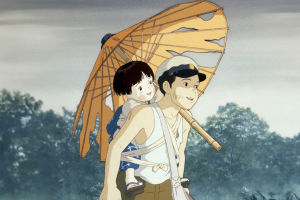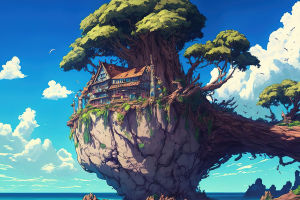When you settle in to watch anime, do you feel drawn more to the nostalgic charm of classic series or the vibrant polish of modern productions? This isn't merely a question of old versus new—it's about how storytelling, artistry, and cultural expression have evolved in anime over the decades.
Instead of a simple preference, this exploration dives into what makes each era uniquely meaningful and how they shape your experience as a viewer.
The Artistic Soul: Hand-Drawn Warmth vs. Digital Precision
Classic anime, often from the 70s through the 90s, carries a unique visual identity shaped by painstaking hand-drawn animation. These works, like Sailor Moon, Dragon Ball, or Ghost in the Shell, showcase artistry where each frame was crafted with care and personal touch. This creates a tangible warmth and organic feeling that many fans find nostalgic and deeply engaging.
In contrast, modern anime leverages digital technology to deliver crisp, high-definition visuals. Shows like Demon Slayer and Jujutsu Kaisen exhibit fluid motion and dazzling effects impossible to achieve before. Digital tools allow more vibrant colors, detailed shading, and smoother action sequences, making the viewing experience immersive and spectacular.
Yet, some argue this shift sacrifices a bit of the artistic soul. Classic anime's hand-painted imperfections and texture invite intimate connection, while modern styles sometimes favor spectacle over nuance. But both have their own kind of beauty, appealing differently depending on what viewers seek.
Storytelling Evolution: Original Vision vs. Refined Craft
Classics often broke new ground, pioneering genres and themes. These series were bold experiments unafraid to explore complex characters and narratives, shaping the template for future anime. For instance, Neon Genesis Evangelion introduced psychological depth and abstract storytelling that still impresses today.
Modern anime benefits from decades of foundation, often weaving more polished plots and diverse genres. Advances in writing and production have led to nuanced characters, complex world-building, and broader representation. Modern series also tend to refine pacing, sometimes offering tightly structured seasonal arcs rather than sprawling length, making them easier to follow and binge-watch.
However, some fans feel modern anime occasionally lacks the raw originality seen in classics, partly due to commercial pressures and familiar tropes. The sense of discovery that defined classic anime can sometimes be replaced by polished formulas targeting large audiences.
Thematic Depth: Cultural Roots vs. Global Voice
Classic anime is steeped in the cultural context of its time, often reflecting societal values and struggles from decades past. This roots it in a particular era, offering insight into Japan's history and social psyche through allegory and artistic style.
Modern anime speaks to today's global audience with more varied themes, including inclusivity, identity, and mental health. Its stories resonate worldwide through universal human experiences, making anime a shared cultural bridge.
Both eras offer valuable perspectives: classics as windows into history and tradition, and modern works as dynamic conversations on contemporary issues and diversity.
Access and Community: Rarity vs. Ubiquity
Classic anime sometimes requires more effort to find, giving it a cult or treasure-like status. Discovering or revisiting a classic series can feel like uncovering a hidden gem, enhancing appreciation with its historical significance.
Modern anime's advantage lies in accessibility—easily streamed, freshly released, and widely discussed. This fosters vibrant fan communities and real-time engagement, helping newcomers connect instantly to current trends.
Both experiences shape how fans relate to anime culture—whether through intimate retrospection or lively, ongoing conversations.
Your Anime Journey: What Truly Resonates?
Choosing between classic and modern anime ultimately depends on what you value most:
• Do you crave the artistic craft and authentic emotional rawness of hand-drawn classics?
• Or do you lean toward the dazzling visuals, diverse characters, and polished storytelling of modern works?
• Perhaps you appreciate both for their distinct strengths and allow your mood or curiosity to guide you.
Anime is a rich, evolving art form, and each era contributes meaningfully to its legacy. Reflection on your preferences reveals more than taste—it uncovers how stories, animation style, and cultural context influence your connection to the medium.
So, think about the last anime that truly moved you. Was it one with vintage charm and pioneering spirit, or a sleek, contemporary masterpiece? How did that experience shape your feelings about anime's evolving landscape?
I'd love to hear which era captivates you—and why. Sharing these views enriches the way we all appreciate anime, connecting us across generations and styles. After all, whether classic or modern, anime invites us into worlds that inspire, challenge, and delight.


